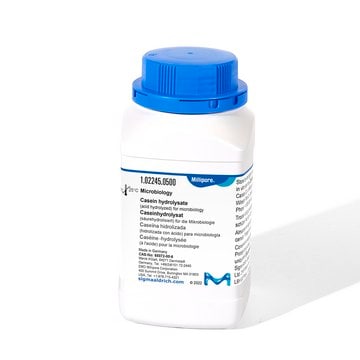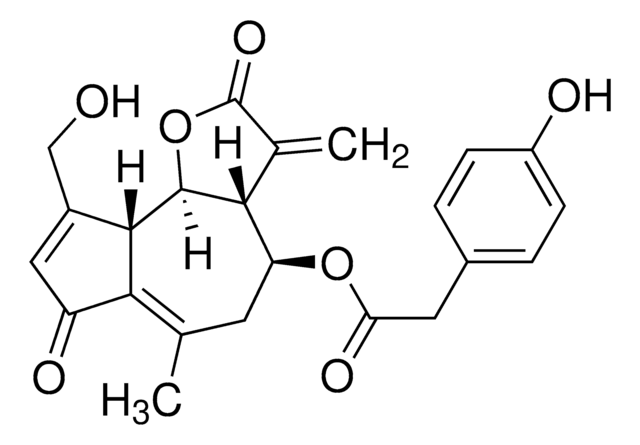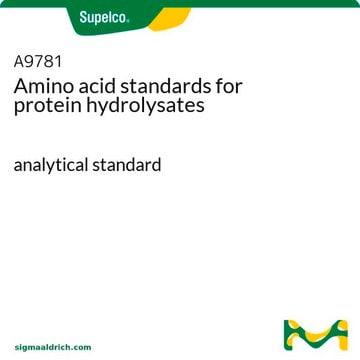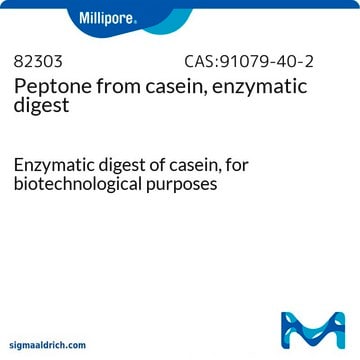82514
Protein Hydrolysate Amicase®
suitable for microbiology
Synonym(s):
Peptone from casein, Amicase®, Case amino acids, Casein acid hydrolysate
About This Item
Recommended Products
biological source
bovine milk
Quality Level
form
powder
composition
total nitrogen (N), ≥13%
nitrogen analysis
, ~0.3 AN:TN ratio
impurities
~5% water
ign. residue
≤5%
loss
≤11% loss on drying
pH
6-7 (2% in H2O)
solubility
H2O: 2%, clear, yellow
application(s)
food and beverages
microbiology
suitability
Bacillus spp.
Enterobacter spp.
Escherichia coli
Saccharomyces spp.
Staphylococcus spp.
Streptococcus spp.
coliforms
Looking for similar products? Visit Product Comparison Guide
Application
Legal Information
Storage Class Code
11 - Combustible Solids
WGK
WGK 1
Flash Point(F)
Not applicable
Flash Point(C)
Not applicable
Choose from one of the most recent versions:
Already Own This Product?
Find documentation for the products that you have recently purchased in the Document Library.
Customers Also Viewed
Articles
Culture media provides a habitat with suitable nutrients, energy sources, and certain environmental conditions for the growth of microorganisms. The components of the culture media range from simple sugars to peptones, salts, antibiotics, and complex indicators.
Our team of scientists has experience in all areas of research including Life Science, Material Science, Chemical Synthesis, Chromatography, Analytical and many others.
Contact Technical Service

















